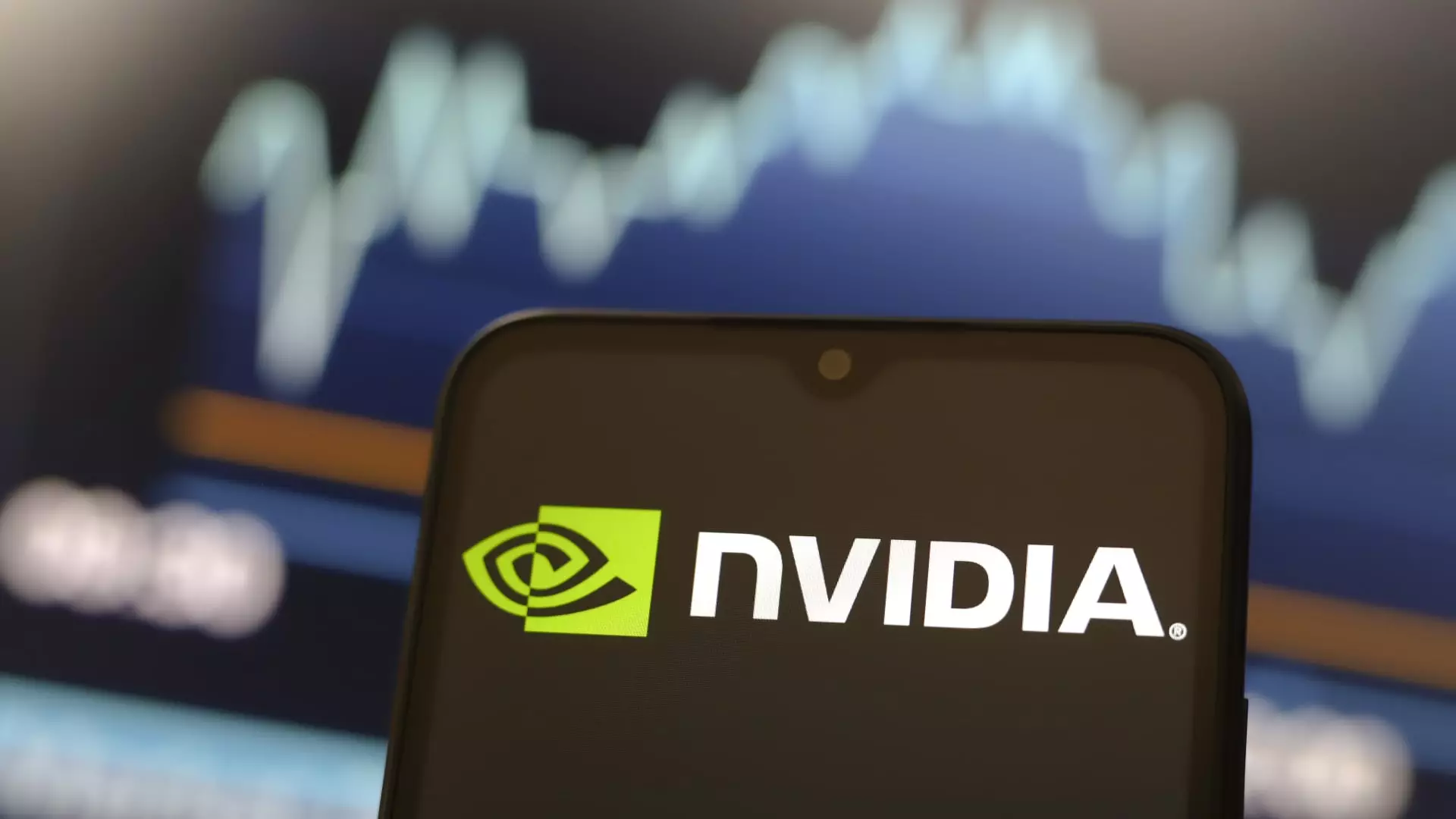The stock market can be a turbulent sea for investors, characterized often by sudden surges and equally swift declines. This is particularly true in the semiconductor sector, where Nvidia, the chipmaker that has notably surged in the AI boom, recently found itself navigating through troubled waters. Despite the Nasdaq Composite reaching new heights, Nvidia’s shares and market perception have taken a significant downturn. This stark contrast serves as a reminder of the volatility inherent within technology stocks, especially in the rapidly evolving landscape of artificial intelligence.
Nvidia shares saw a marked decline, officially entering correction territory, closing down 1.7% on Monday. On the heels of remarkable growth of 166% earlier in the year, excitement surrounding AI technologies fueled this appreciation. However, as of December, the stock has dipped by 4.5%, settling approximately 11% below its record high of $148.88, achieved just weeks prior. Analysts define a market correction as a decline of at least 10% from a recent peak, amplifying the sense of urgency surrounding Nvidia’s current trajectory.
The recent downturn in Nvidia’s stock appears to be an indication of profit-taking among investors after an incredibly prosperous year. Keith Lerner, co-chief investment officer at Truist, succinctly highlighted Nvidia’s indispensable role in AI infrastructure, stating, “You need Nvidia, and you need their chips for infrastructure.” However, Lerner also pointed out a critical shift in market sentiment, suggesting a rotation among leading tech stocks, often dubbed the “Magnificent Seven,” as investors seek out other opportunities for gains.
As Nvidia grapples with its current challenges, other semiconductor companies are experiencing a different fate. Broadcom, for example, surged on the same day Nvidia stumbled, climbing a staggering 11% following positive earnings results that catapulted its market capitalization above $1 trillion. This divergence highlights a notable trend where investors are diversifying their portfolios and seeking faster growth prospects beyond Nvidia, further underscoring concerns about Nvidia’s potential stagnation.
Market analysts have noted crucial price levels that will serve as testing grounds for Nvidia’s resilience. Roth MKM indicated that the $125 to $130 range is vital for the stock’s stability and, by extension, could influence broader market trends. With Nvidia’s struggles against a backdrop of overall market growth, these price levels may reveal critical insights into the health of the tech sector as a whole, especially as new AI developments emerge.
While Nvidia has historically dominated the AI chip market, the arrival of competition from other semiconductor firms has started to shift the landscape. Stocks such as Micron Technology rose nearly 6%, fueled by anticipation of its upcoming quarterly results. Likewise, companies like Marvell Technology and Lam Research also saw lifts in their stock prices, suggesting that investors are keenly keeping an eye on the broader semiconductor arena rather than placing all their bets on a single provider.
Nvidia’s recent plunge is not merely a company-specific issue; it embodies the unpredictable nature of the tech market. Investors must scrutinize market trends closely, understanding that while Nvidia has been a significant player in the AI revolution, the landscape is changing. With competition increasing and a potential for profit-taking, Nvidia serves as both an example of the potential highs in tech investments and a warning of the lows that can follow. The message is clear: in an industry as fast-paced and volatile as semiconductors, the rise and fall of companies like Nvidia can come rapidly, prompting investors to diversify their portfolios and remain vigilant.

